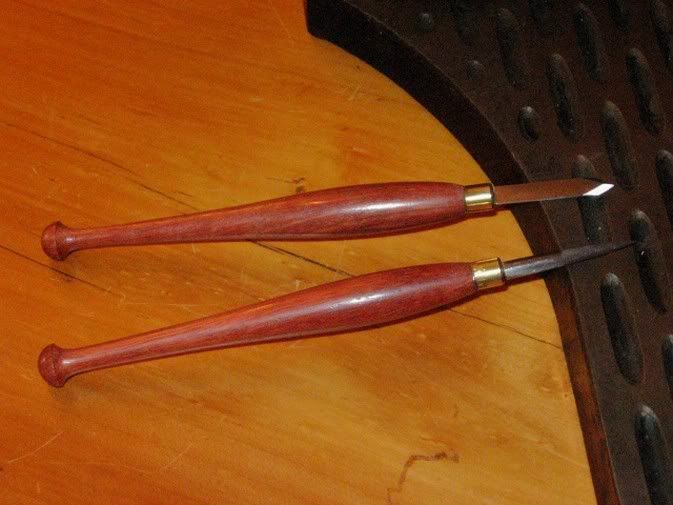Assuming you wish to remove the waste exactly (i.e. go from saw cut to saw cut).....
If you mark a pin from a tail with a pencil, then you must remove all the pencil line since it lies in the waste.
This assume that there will be no compression in the wood, such as joining two hardwoods. If, for example, you join a hard- and a softwood, then you could leave a tad of pencil line.
A knifed line is far more exact than a pencil line. If you knife the pins from the tails, then you aim to saw up against the resulting thin line.
Knifing the lines ....
My ideal dovetail marking knife has a thin double bevelled blade. I mark all the sides in one direction, then flip the knife and do the other side.
The blade of this knife must be thin to fit into the narrow gap of skinny dovetails.
The knives I make are very similar to those made by others, such as
Dave Anderson (Chester Toolworks) http://www.chestertoolworks.com/index.htm
and Dave Jeske (Blue Spruce) http://www.bluesprucetoolworks.com/tools/toolstore.htm
Here are my favourites:
Here are the completed dovetails from the above example ..
Regards from Perth
Derek








 Reply With Quote
Reply With Quote


 At least for the 2 long sides that are already on. Actually the epoxy squeeze doesn't seem to be any worse than PVA squeeze out. It's more brittle but actually seems to come off easier without tearing wood fibers along with it. Nothing that cant be popped off with a sharp chisel anyway. I'll post pics after I get this end done and trimmed up. Then I need to lather/rinse/repeat for the other end which is also the back jaw for the twinscrew vise.
At least for the 2 long sides that are already on. Actually the epoxy squeeze doesn't seem to be any worse than PVA squeeze out. It's more brittle but actually seems to come off easier without tearing wood fibers along with it. Nothing that cant be popped off with a sharp chisel anyway. I'll post pics after I get this end done and trimmed up. Then I need to lather/rinse/repeat for the other end which is also the back jaw for the twinscrew vise.


